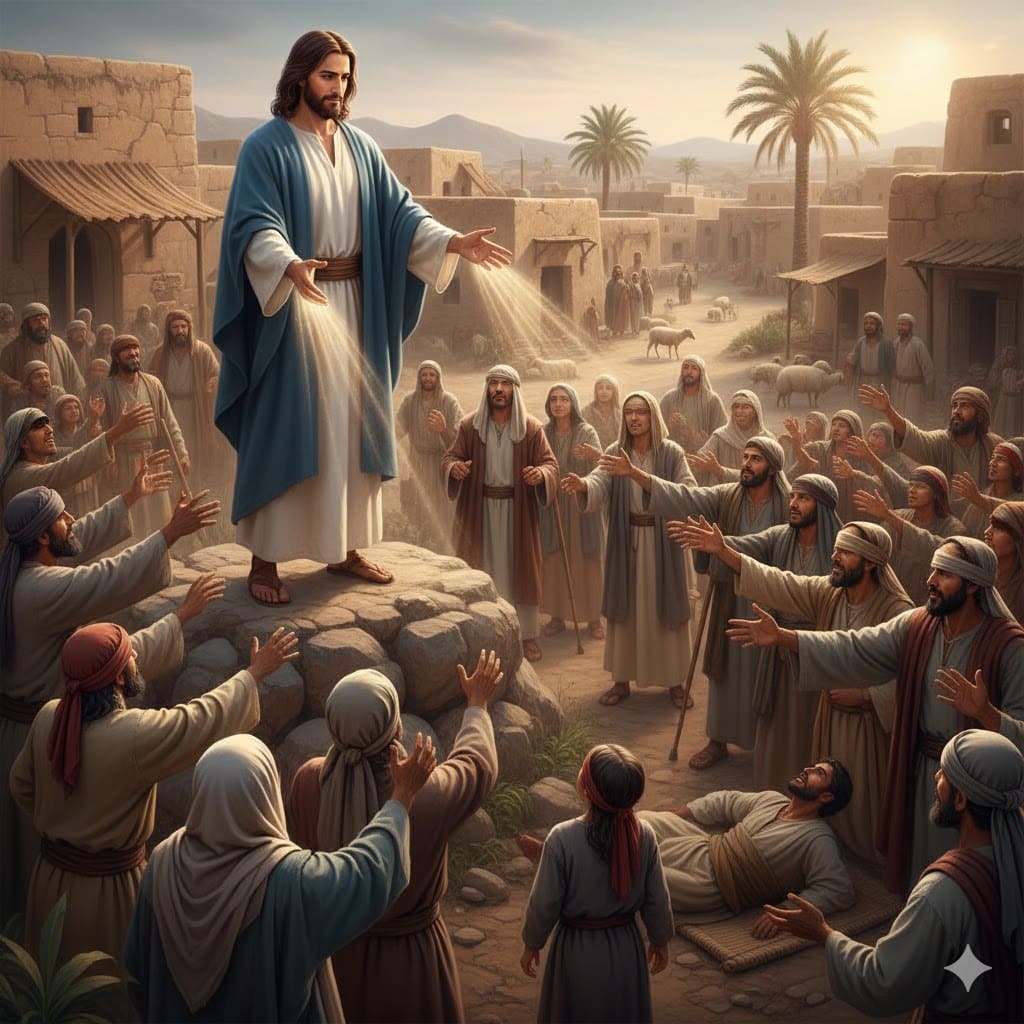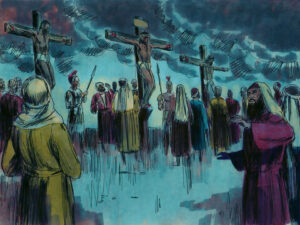Jesus healed many people on the Sabbath, such as Simon Peter’s mother-in-law, a man with a withered hand, and a woman bent over in a synagogue.
These acts drew criticism from religious leaders, who saw them as breaking Sabbath laws.
In response, Jesus argued that doing good—like helping someone in need or rescuing an animal—was not only lawful on the Sabbath, but also aligned with God’s desire for mercy and life over rigid rule-keeping.
What is the Sabbath?
The Sabbath, observed from Friday evening to Saturday evening, is rooted in Creation and the Ten Commandments, where God instructed the Israelites not to work on this holy day (Exodus 20:8-11), (Genesis 2:2-3).
Over time, Jewish religious leaders created detailed rules about what counted as “work,” making the Sabbath central to religious identity and observance.
Why Did Jesus Heal on the Sabbath?
Jesus’ miracles on the Sabbath provide a window into His character and message.
These acts were about more than healing bodies—they challenged strict traditions and pointed to deeper truths about compassion, mercy, and the real meaning of God’s law.
They also often brought Him into conflict with the religious leaders, who saw His miracles as violations of the Sabbath.
Key Miracles Jesus Performed on the Sabbath
Let’s look at the documented miracles Jesus performed on the Sabbath:
1. Healing the Man with the Withered Hand
References: Matthew 12:9-14, Mark 3:1-6, Luke 6:6-11
Jesus entered a synagogue and saw a man with a shriveled hand. Knowing the religious leaders were watching, he asked: “Is it lawful to do good on the Sabbath?”
He then healed the man’s hand, provoking anger from the Pharisees, who saw this as a breach of Sabbath regulations.
2. Healing a Crippled Woman
Reference: Luke 13:10-17
In another synagogue setting, Jesus saw a woman crippled for 18 years. He called her forward, laid His hands on her, and immediately she straightened up.
The leader of the synagogue objected, but Jesus responded by pointing out that mercy—helping those in need—should never be set aside, not even for the Sabbath, because the Sabbath was made for man.
3. Healing a Man with Dropsy
Reference: Luke 14:1-6
At a Pharisee’s house, Jesus noticed a man suffering from dropsy (a kind of swelling). Before healing him, Jesus asked if healing on the Sabbath was lawful.
He healed the man and highlighted how even the Pharisees would help their own animals in trouble on the Sabbath, so helping a person was even more important.
4. Healing the Paralytic at Bethesda
Reference: John 5:1-18
At the Pool of Bethesda, Jesus healed a man paralysed for 38 years. He told him to “pick up your mat and walk”—carrying the mat was seen as work by some religious leaders, sparking their anger and further conflict with Jesus.
5. Healing the Man Born Blind
Reference: John 9:1-16
Jesus encountered a man blind from birth, made mud with His saliva, anointed the man’s eyes, and told him to wash in the Pool of Siloam.
The healing happened on a Sabbath, so the Pharisees not only questioned the man but also challenged the legitimacy of Jesus’ authority, since He had “worked” by making the mud.
Why Did These Miracles Cause Controversy?
For the religious leaders, strict Sabbath observation was non-negotiable. Anything resembling work—even acts of compassion—risked their definition of breaking God’s command.
Jesus’ actions and words directly confronted this mindset, emphasizing that the Sabbath should be a day for doing good, not just following rules.
When challenged, Jesus countered with arguments about mercy and necessity—for example, that even the strictest observer would rescue a trapped animal on the Sabbath.
For Jesus, acts of love and healing didn’t violate the law; rather, they fulfilled its true purpose.
Jesus’ Teachings About the Sabbath
After these miracles, Jesus often explained the deeper principles behind His actions:
The Sabbath was made for man, not man for the Sabbath. (Mark 2:27)
It is lawful to do good on the Sabbath. (Matthew 12:12)
Compassion matters more than ritual. (Matthew 12:7)
These teachings reframed Sabbath observance—not as legalistic restriction, but as an opportunity for rest, restoration, and mercy.
The Significance of Jesus’ Sabbath Miracles
Jesus’ Sabbath miracles weren’t random. They:
- Demonstrated His authority over both physical illness and religious traditions.
- Modeled the priority of compassion over strict rule-following.
- Challenged religious leaders to reconsider what God truly values.
- Revealed Jesus’ identity as the one bringing true rest and restoration.
- For early Christians and for many readers today, these stories emphasize that faith is about love, mercy, and setting people free—not just about rules and regulations.
Conclusion: Why Do Jesus’ Sabbath Miracles Matter?
If you’re looking to understand Jesus’ miracles on the Sabbath, here’s the bottom line:
Jesus healed and helped people on the Sabbath to show that God’s compassion outweighs religious routine.
Each miracle was a moment of physical and spiritual liberation, challenging others to see the Sabbath—and God’s laws—as a means to care for and restore one another.
In short, Jesus’ Sabbath miracles teach us that God’s priorities are love and mercy. That is the true spirit of the Sabbath—and of Jesus’ entire ministry.
My Letter To A Sunday Keeper – Sabbath Documentary

The Days of Noah – Powerful Documentary (Video Format)

Bible Studies – Written Format







